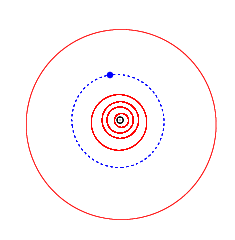|
9968 Serpe
9968 Serpe, provisional designation 1992 JS2, is an asteroid from the middle regions of the asteroid belt, approximately 12 kilometers in diameter. This asteroid was discovered on 4 May 1992, by Belgian astronomer Henri Debehogne at ESO's La Silla Observatory in northern Chile. It was named after Belgian theoretical-physicist Jean Serpe,[2] professor at University of Liège and member of the RASAB.[2] The official naming citation was published by the Minor Planet Center on 17 May 2011 (M.P.C. 75102).[4] Serpe orbits the Sun in the middle main-belt at a distance of 2.4–2.7 AU once every 4 years and 1 month (1,502 days). Its orbit has an eccentricity of 0.05 and an inclination of 13° with respect to the ecliptic.[1] In 1977, it was first observed as 1977 VT at Cerro El Roble Station in Argentina, extending the body's observation arc by 15 years prior to its official discovery at La Silla.[2] According to the survey carried out by NASA's Wide-field Infrared Survey Explorer with its subsequent NEOWISE mission, the asteroid measures 12.355 kilometers in diameter and its surface has an albedo of 0.088.[3] As of 2017, no rotational lightcurve has been obtained of Serpe. The body's rotation period and shape, as well as its spectral type remain unknown.[1][5] References
External links
|
||||||||||||||||||||||||||||||||||||||||||||||||||||||||||
